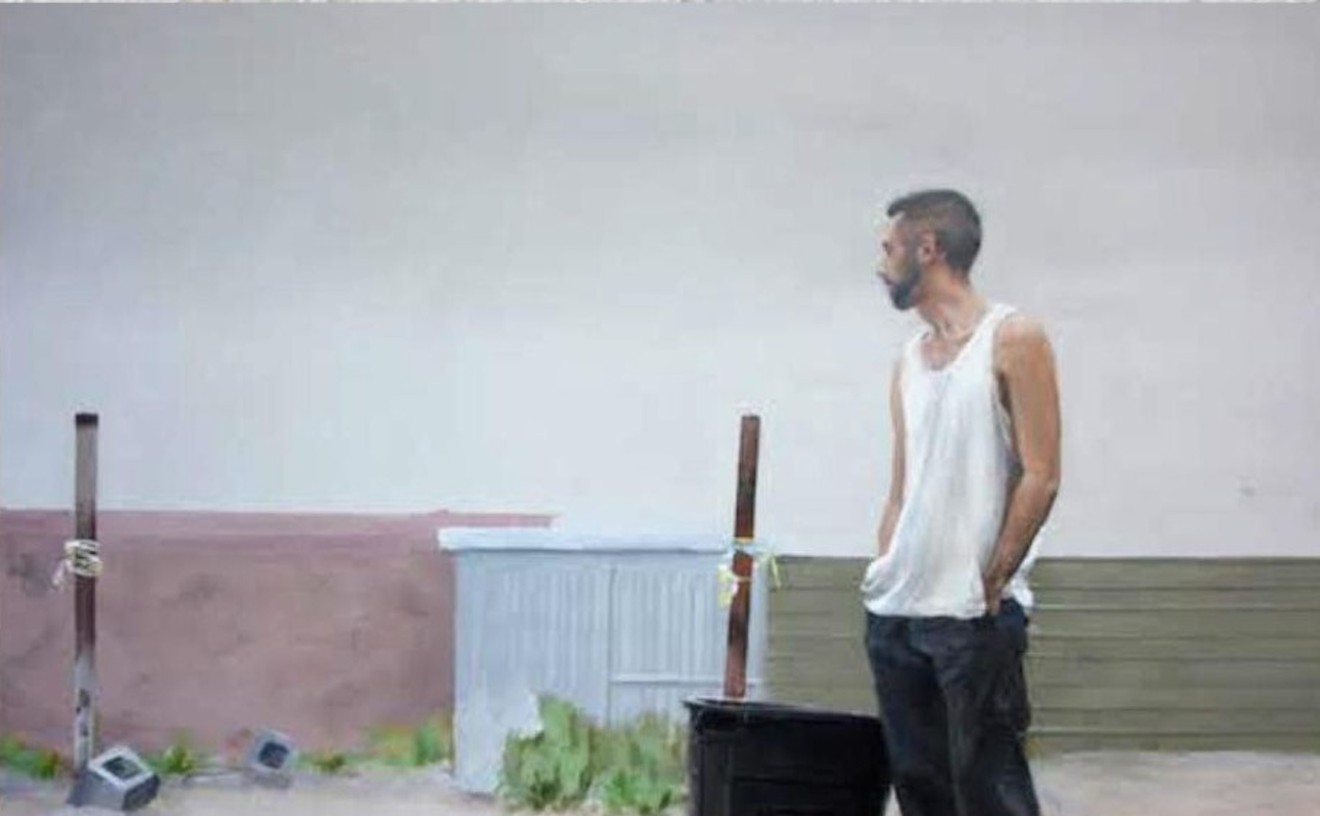In 1992, photographer Sandy Skoglund immortalized Britney Spears' favorite comfort food in The Cocktail Party, a 5-foot-by-4-foot environmental photo in which live models, mannequins, walls, floors — in short, everything appearing in the photo — were covered in artfully arranged, blazingly orange Cheetos.
Now Arizona art photographer Ernie Button can be added to the list of artists who use nutritionally questionable edibles as inspiration for art. Button serves up iconic kids' breakfast cereal as tasteful (and, arguably, tasty) landscapes in "Cerealism," an exhibit of his photographic work, which runs until July 28 at West Valley Art Museum.
Button's ability to disguise the true identity of his tabletop vistas' component parts is exceptionally noteworthy.
Not that food disguised in and as art is anything Earth-shatteringly new. In the 16th century, Italian Renaissance Mannerist artist Arciboldo, court painter and gala party planner for the imperial court, became bored with the same old extravaganzas and began concocting whimsical portraits of court subjects composed of discernible fruits, vegetables, tubers, and fish. And it's been downhill since the 1500s.
Borrowing from the technical arsenal of photographers like David Levinthal, who, in photographic series like "Desire," "American Beauties" and "Mein Kampf," uses innocent toy figures involved in bizarre narrative settings dealing with sex and violence, Button harnesses selective focus to create moody, enigmatic tones for his chosen subjects. Those subjects happen to involve objects in landscape vistas.
However, what really compels the viewer to smudge the line between reality and fantasy and get sucked into the vortex of believability is the artist's shadowy lighting and the use of photos of actual Arizona sunsets and skies as backdrops in his images. Add to the mix luscious color saturation blown up in 11-inch-by-14-inch C-prints, which are made from color film negatives, and the end product is as irresistible as Fruity Pebbles to a 2-year-old.
Though the viewer can immediately identify some breakfast cereals being used in Button's images, others are not as easily recognizable, as least to me. I felt better about my patent ignorance of kids' morning food after one of the docents confided that she had to ask children visiting the museum to identify a number of cereals appearing in the images.
For example, French Toast Canyon (2004), a mini-Grand Canyon gorge sliced by the rush of turquoise-colored bran flakes, was lost on me, since I had never seen French Toast Crunch, a cereal from the '90s made in little French toast-shaped and flavored bits, now made only in square form, much to the apparent distress of French toast-shape lovers.
But even I, the Wheat-Toast-for-Breakfast Girl, could determine that the four-leaf clovers the artist used as props in his dreamy vignettes, Four Leaf Clover Patch (2004) and Pink Clouds and Green Clovers (2005), were obviously Lucky Charms "marbits," given their bilious color and puffy, but crusty, baked marshmallow surface. And there is no question that Shredded Wheat Bales (2004) features unfrosted, unfilled, normal-size Shredded Wheat blocks that conjure up a field of harvested hay bales, casting finger-long shadows and set against a fiery late-fall sky. The image more than suggests Monet's iconic impressionistic paintings of haystacks in a Chailly field done in the 1890s.
Classic Post Grape-Nuts are transmuted into forlorn desert landscapes in Button's 2005 series titled "Grape Nuts Dunes." My absolute favorite image in the exhibit is Cheeramids #1, an exotic shot of what appear to be three ancient Egyptian pyramids staggered to the horizon and bathed in golden light, set off by ethereal clouds scudding across an endless, dusty sky. On closer inspection, the pyramids have been constructed of Cheerios, a highly significant cereal choice obviously meant to convey the everlasting nature of these silent desert sentinels. Mother/blogger amberlicious explained the little doughnut-shaped delights' indestructibility when she recently declared on her blog, www.soggycheerios.com, "[T]here is not a force in nature stronger than a Cheerio that was previously in milk and then dried to the table/floor/chair/kid's head."
Button's surreal cereal constructions work perfectly well by themselves, but take on a tinge of pathos when the artist divulges the significance he attaches to breakfast cereal in an artist's statement accompanying the exhibit. Raised by a single mother who struggled to keep her young brood together, the family didn't have a lot of money.
It was the small things that had a lasting impact on Button as a child: "Those times were difficult on both her and us . . . Something like cereal was a luxury item. A brand-name cereal was more of a rarity as they were consistently more expensive. Something like King Vitamin [sic] (a popular '70s cereal) or Cap'n Crunch made for pure breakfast heaven."
Which is exactly where I went after seeing "Cerealism."










